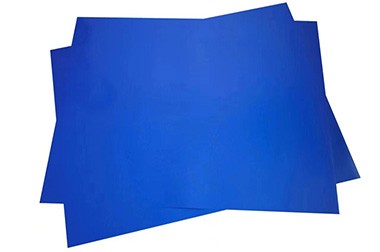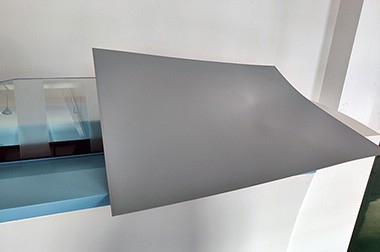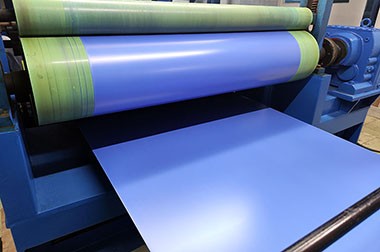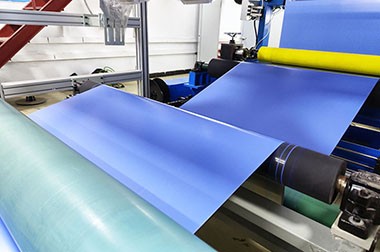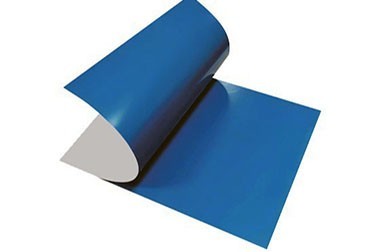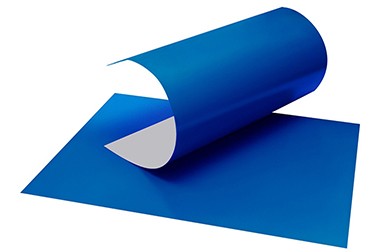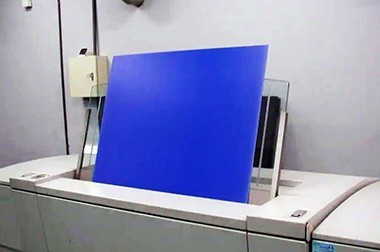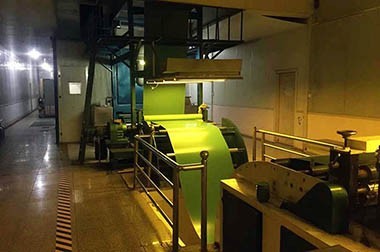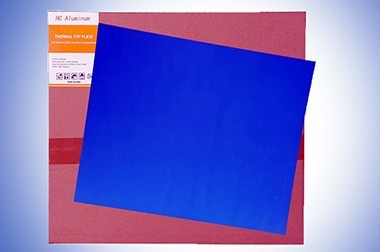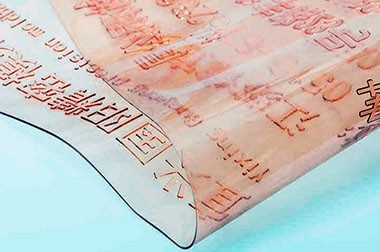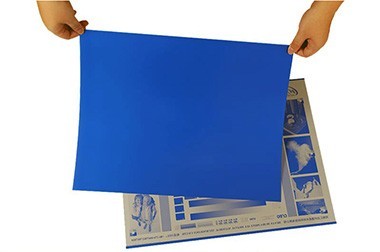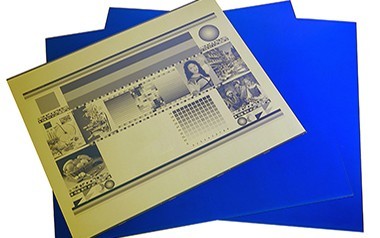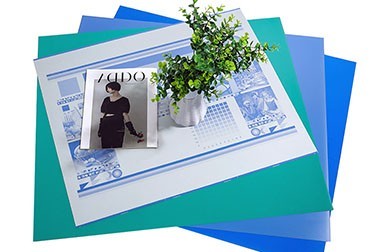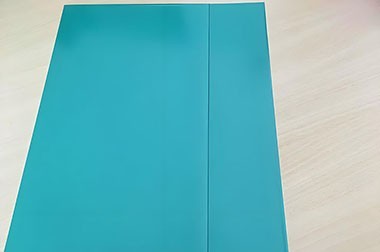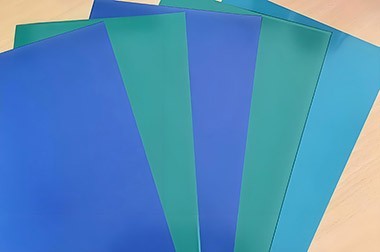PS-plaat
Een PS-plaat (pre-sensitized) is een drukplaat die wordt gebruikt in het offsetdrukproces. Het is een offsetdrukplaat die een lichtgevoelige coating gebruikt om inkt op het papier over te brengen. Offsetdrukken is een veelgebruikte methode voor het produceren van hoogwaardige afdrukken en PS-platen vormen een belangrijk onderdeel van het proces.
-
Gebruik:
Veelgebruikt in de offsetdrukindustrie.
-
Samenstelling:
Meestal gemaakt van aluminium, bedekt met een lichtgevoelige laag.
PS-plaat is een belangrijk onderdeel van het offsetdrukproces. PS-plaat biedt stabiele prestaties, een hoge gevoeligheid, een grote ontwikkelingsvrijheid en een hoge duurzaamheid van de afdruk.
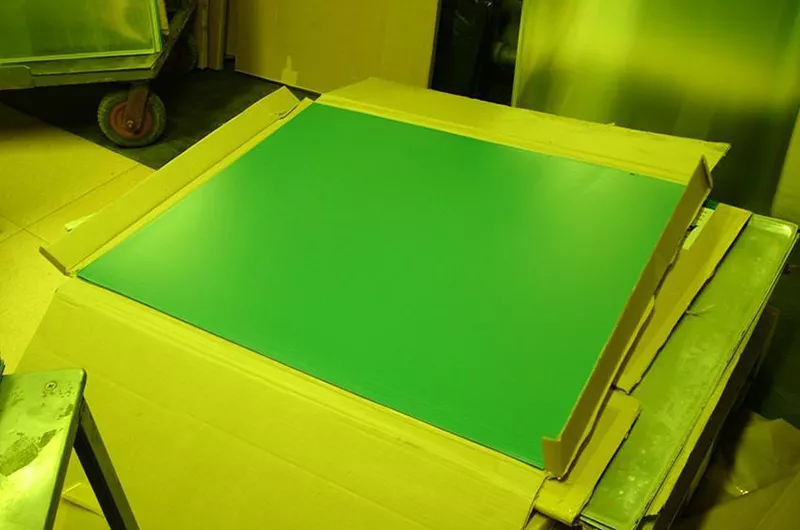
Technisch gegevensblad PS-plaat
| Modelnr. | PS-plaat |
| Gebruik | Offsetdruk, Digitaal Drukken |
| Stijl | Positief |
| Spectrale gevoeligheid | 320-450 nm |
| Oplossing | 2-99% |
| Dikte | 0, 15-0, 30 mm |
| Kleur | Groente |
| Handelsmerk | HC of op maat gemaakt |
| Specificatie | 0, 15 mm 100 stuks/doos; 0, 30 mm 50 stuks/doos. |
| HS-code | 3701302 |
| Materiaal | Aluminium |
| Type | PS-plaat |
| Lange indruk | 60.000-100.000 afdrukken. |
| Maten | Aangepaste maten |
| Ontwikkelaartemperatuur | 23+/-2 graden |
| Benodigde laserenergie | 80-180 mJ/Cm2 |
| Transportpakket | Export standaard zeewaardig pakket |
Voordelen van PS-plaat
Het heeft een goede stabiliteit, brede tolerantie en hoge gevoeligheid en is geschikt voor alle gangbare drukmachines, ontwikkelmachines en ontwikkelaars.
- Hoge kwaliteit: kan heldere en gedetailleerde beelden produceren.
- Duurzaamheid: bestand tegen lange printperioden.
- Consistentie: zorgt voor een uniforme en consistente beeldreproductie.
- Compatibiliteit: Werkt met verschillende inktsoorten en substraten.
- Milieuvriendelijk: PS-platen kunnen worden gerecycled of veilig worden afgevoerd, waardoor ze een duurzamere printoptie vormen.
- Kosteneffectiviteit: PS-platen zijn relatief goedkoop vergeleken met andere soorten drukplaten.
HC Aluminium PS Plaattype
-
Positieve PS-platen: Deze platen produceren een afbeelding wanneer ze worden belicht. De belichte delen worden onoplosbaar, terwijl de onbelichte delen oplosbaar blijven. Ze zijn ideaal voor het afdrukken van fijne lijnen en kleine tekst.
-
Thermische PS-platen: Deze platen gebruiken warmte in plaats van licht om de stencil te maken. Ze worden meestal gebruikt voor het printen van grote volumes.
-
Negative Working PS Plates: These plates produce an image when exposed to light, with the exposed areas remaining soluble and the unexposed areas becoming insoluble. They are ideal for printing large areas of solid color.
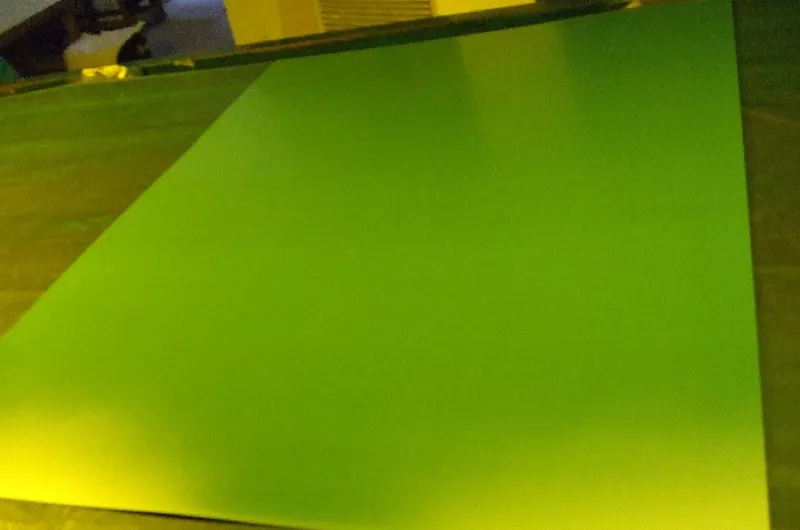
PS Plate Structure Composition
PS plates are made from a variety of materials, including aluminum, paper, and polyester. The photosensitive coating on the plate is usually made from a mixture of polymers, monomers and photoinitiators. When exposed to UV light, the coating hardens and becomes insoluble, creating a template that can transfer ink to paper.
The PS plate is composed of a substrate and a PS plate coating, that is, a photosensitive layer. The substrate is mostly an aluminum-based plate. The photosensitive layer is a layer formed by coating photosensitive liquid on the substrate.
Commonly used PS aluminum plate base materials are generally 1050 and 1060 aluminum plates in H18 state. In addition to being used to produce PS plates, 1060 aluminum plates are also widely used in positive PS plates, thermal CTP plates, photosensitive CTP plates, UV-CTP plates, etc.
PS Plate Application Areas
PS version is used for high-end commercial color printing and newspaper printing. The unique production process and high-quality raw materials enable the printing plate to have high photosensitivity speed, good halftone dot reproduction and stable performance.
- Commercial printing: magazines, brochures, catalogs.
- Newspaper printing: high-speed production and high-quality imaging.
- Packaging: Labels, boxes and other packaging materials.
Factors affecting the quality of PS Plate
1. Storage conditions
- Temperature: PS plates should be stored in a cool place, the ideal temperature is 15-25℃. Excessively high temperatures will accelerate the aging of the photosensitive coating.
- Humidity: A dry environment is best, and the relative humidity should be controlled at 40-60%. Excessive humidity will cause the coating to become damp and affect the photosensitivity effect.
- Light: Avoid exposure to sunlight or strong light, because ultraviolet rays will activate the photosensitive layer in advance and reduce the service life of the plate.
2. Treatment method
- Handling: Handle it with care during handling, avoid violent collisions and squeezes, and prevent plate deformation or coating peeling.
- Gloves: Clean gloves should be worn during operation to avoid skin oil and dirt contaminating the plate.
- Dustproof: Keep the working environment clean to prevent dust or other impurities from adhering to the plate and affecting the exposure and development effects.
3. Exposure time
- Exposure intensity: Exposure intensity and time must match. Exposure time that is too long or too short will affect the fineness and contrast of the image. The optimal exposure time should usually be determined based on the plate manufacturer's recommendations and actual experiments.
- Exposure uniformity: Ensure that the exposure light source is evenly distributed to avoid local overexposure or underexposure, resulting in uneven images.
- Light source quality: Use a stable exposure light source with suitable spectrum. Ultraviolet light source is commonly used, and keep its power and spectral output stable.
4. Development process
- Developer concentration: The concentration of the developer should be controlled within the specified range. Too high or too low will affect the development effect.
- Development time: Too long or too short a development time will result in partial loss or residue of the image. The development time should be adjusted according to the type and concentration of the developer.
- Developing temperature: The temperature of the developer should be controlled within an appropriate range, usually 20-25°C. Too high or too low a temperature will affect the development effect.
5. Photosensitive coating quality
- Coating uniformity: The photosensitive coating should be uniform to avoid uneven coating thickness, which will affect the exposure and development effects.
- Coating adhesion: The coating should have good adhesion to prevent it from falling off during development or printing.
6. Printing environment and equipment
- Printing pressure: The pressure of the printing press should be appropriate. Too much or too little pressure will affect the image transfer effect and the service life of the plate.
- Fountain solution: The quality and ratio of the fountain solution should be appropriate to maintain a good ink and ink balance and avoid premature aging or contamination of the plate.
PS Plate Production Process
1. Preparation stage
- PS plate composition: usually made of aluminum and coated with a layer of photosensitive material on the surface.
- PS positive plate: The photosensitive material becomes soluble after exposure and is washed away during development, leaving the graphic part.
- Negative PS printing plate: The unexposed parts are washed away, and the exposed parts form images and text.
2. Exposure
- Process: Use an ultraviolet light source to illuminate the plate through a piece of film with graphics and text.
- Result: Chemical changes occur in the area where the light hits.
3. Develop
- Developer treatment: Dip the exposed PS plate into the developer to remove the parts that have not undergone chemical changes.
- Graphic and text formation: leaving the exposed graphic and text area.
4. Printing
Loading: Install the developed plate on the printing press.
5. Dampening and inking
The non-image and text parts absorb water and form a protective layer.
The graphic and text parts absorb ink but not water.
6. Printing process: The ink is transferred from the plate to the blanket, and then transferred from the blanket to paper and other substrates.
PS Plate Storage
- Storage: Store in a cool, dry place away from direct sunlight.
- Behandeling: Ga voorzichtig te werk om krassen en verontreinigingen te voorkomen.
- Reinigen: Volg de richtlijnen van de fabrikant wat betreft reinigingsoplossingen en -methoden.
PS-platen vormen een belangrijk onderdeel van het offsetdrukproces en bieden kosteneffectieve, hoogwaardige en milieuvriendelijke drukoplossingen. PS Edition staat bekend om zijn kwaliteit, duurzaamheid en veelzijdigheid. Ze spelen een essentiële rol in de efficiënte productie van diverse drukmaterialen.
De volgende PS- en CTP-platen kunnen u interesseren



